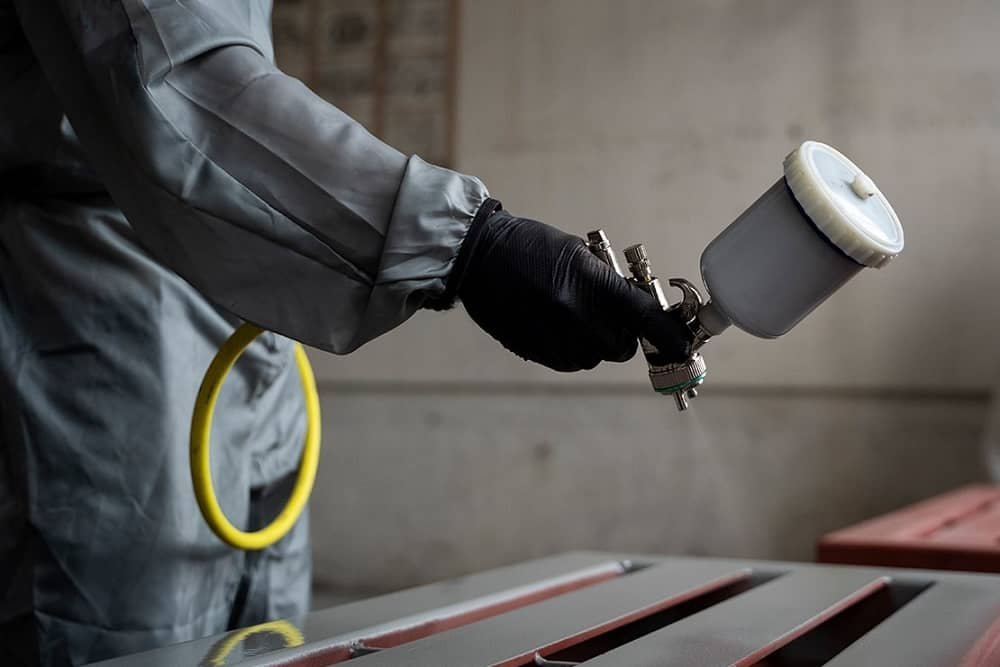Powder coating equipment has advanced far beyond basic application methods, and one of the most important improvements is in how material is loaded. Dust control at this stage keeps the workspace cleaner, the finish more consistent, and the operator safer. Modern powder coating machine designs now integrate specialized systems that make dust-free loading both efficient and reliable.
Sealed Hopper Systems Preventing Airborne Powder Escape During Fills
A sealed hopper system creates a closed environment during powder loading, ensuring particles stay contained instead of drifting into the workspace. The hopper lid locks securely into place, and internal gaskets form a tight seal that blocks air leaks. This not only keeps the air clear but also reduces waste, as every bit of powder ends up inside the machine rather than settling on surfaces nearby.
Advanced designs often incorporate pressure equalization valves that stabilize the interior environment while the powder is being added. This allows operators to pour directly from bulk containers without worrying about sudden bursts of dust escaping. For facilities using a powder coating machine multiple times a day, the reduction in airborne particles has a direct impact on air quality, product quality, and cleanup time.
Enclosed Conveyor Feeds Maintaining Clean Transfer from Storage to Spray Booth
An enclosed conveyor feed works like a direct pipeline from storage bins to the powder coating machine, moving the material without exposing it to the air. The system is fully shielded, often with flexible seals at the entry and exit points, so powder stays within the transport channel. This keeps transfer points clean and prevents fine particles from escaping during movement.
These conveyors are especially useful in high-volume operations where manual loading would slow production and increase mess. The enclosed design also reduces the risk of contamination, since no open-air exposure means fewer chances for debris or moisture to mix with the powder. For facilities focused on consistent coating quality, enclosed conveyors eliminate a major source of variable results.
Negative Pressure Loading Zones Drawing Stray Particles Away from Operators
Negative pressure zones use directional airflow to pull dust away from the operator during loading. The loading area is enclosed on multiple sides, and air is drawn inward through filtered vents to capture stray particles before they can escape. This design not only keeps the workspace clean but also protects workers from inhaling fine powders.
In a modern powder coating machine setup, these zones can be integrated directly into the hopper or loading chute. The extracted air is routed through high-efficiency filtration units before being released, ensuring that no fine powder returns to the workspace. This approach is especially valued in facilities aiming to maintain strict cleanliness standards without sacrificing loading speed.
Precision Metering Valves Regulating Powder Flow Without Spillage
Precision metering valves control the exact amount of powder entering the machine, preventing overfills and eliminating unnecessary waste. These valves can be manually adjusted or fully automated, depending on the system design, and they ensure a consistent flow rate for better process control. When properly set, they remove the guesswork from loading and keep the interior environment stable.
A powder coating machine equipped with high-quality metering valves also benefits from better coating uniformity. Since the powder enters in controlled quantities, spray guns receive a steady supply, reducing variations in thickness. By minimizing spillage during the loading process, these valves help maintain both the cleanliness of the work area and the efficiency of the coating operation.
Anti-static Loading Equipment Minimizing Airborne Particle Attraction
Powder particles naturally carry static charges, which can cause them to cling to surfaces or float unpredictably during loading. Anti-static loading equipment neutralizes these charges through grounding systems or ionized air flows, making the powder settle more predictably into the hopper. This greatly reduces the amount of airborne dust and improves transfer efficiency.
Operators using anti-static features on their powder coating machine notice a clear difference in cleanliness and ease of handling. Not only is the material less likely to cling to tools and containers, but it also moves more smoothly through feed systems. This leads to cleaner results, faster loading, and less need for post-operation cleanup.
Integrated Vacuum Recovery Capturing Excess Powder at Loading Points
Vacuum recovery systems work right at the loading point, drawing in any stray powder that might escape during transfer. The vacuum connects to a sealed collection unit, where the powder can be filtered and reused instead of being discarded. This adds a layer of efficiency to the process while keeping the workspace free from fine dust buildup.
For a powder coating machine, integrated recovery means less waste and more consistent working conditions. It also helps prevent powder from settling into ventilation systems or sensitive equipment nearby. Over time, the savings in reclaimed material and reduced cleanup labor make vacuum recovery systems a valuable part of a dust-free loading strategy.
Smooth Interior Surface Design Reducing Residue Buildup Inside Feed Lines
Feed lines with smooth interior surfaces make a surprising difference in dust control. A rough or uneven interior can trap powder particles, causing buildup that eventually breaks loose and creates bursts of airborne dust. Polished or coated interiors allow powder to move freely, reducing the risk of clogs and minimizing residue over time.
Incorporating this design into a powder coating machine setup ensures that material flows consistently from the loading point to the application system. This smooth transfer not only improves dust control but also enhances overall system reliability. Fewer interruptions for cleaning mean more productive operation and longer-lasting equipment performance.




